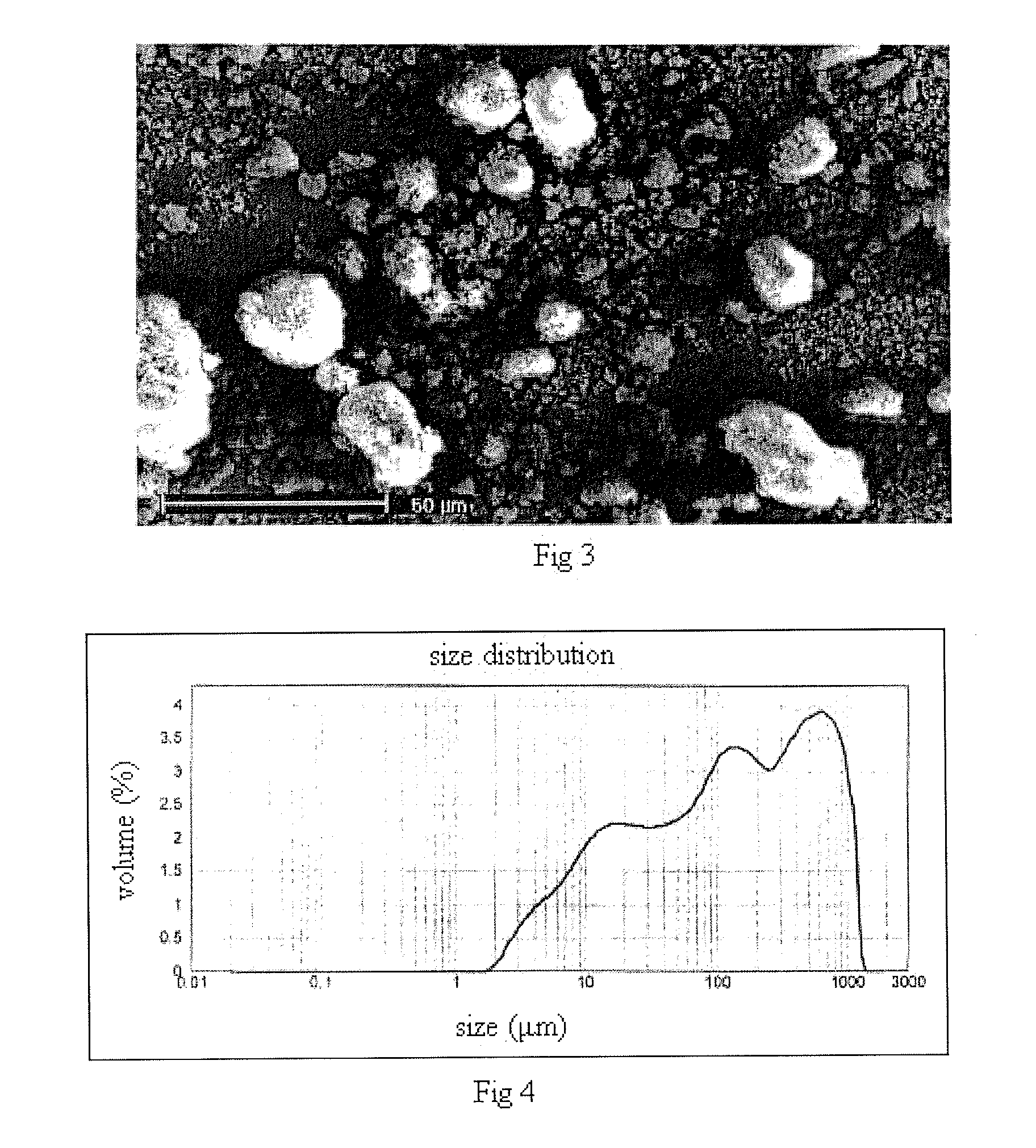Catalyst component for polymerization of olefin and preparation method thereof
a technology of catalyst and olefin, which is applied in the direction of catalyst activation/preparation, physical/chemical process catalyst, chemical/physical process, etc., can solve the problems of difficult control of the shape of the prepared catalyst granule, the shape of the obtained catalyst granule is also difficult to be controlled, and the above methods are still complex forming steps and difficult control. , to achieve the effect of good hydrogen response, good comprehensive performance and high catalyst activity
- Summary
- Abstract
- Description
- Claims
- Application Information
AI Technical Summary
Benefits of technology
Problems solved by technology
Method used
Image
Examples
example 1
[0052]30 ml of hexane, 3.15 ml of hexane solution of dibutyl magnesium (1M) and 1.0 ml of isooctanol are weighed out in sequence and mixed, then the temperature is increased to 50° C. and the reaction is kept for 0.5 h under stirring to obtain a transparent solution. 3 ml of hexane solution (10 g / L) of the polystyrene-polybutadiene triblock copolymer (Kraton, FG1901X, in which the content of polybutadiene is 70%) is added. Then the temperature of the system is decreased to −50° C., and 3.15 ml of hexane solution of boron trichloride (1M) and 0.35 ml of titanium tetrachloride are added in sequence. After the feeding is completed, the temperature is increased quickly to 50° C. within 10 min and the reaction is kept for 2 h. The temperature of the catalyst suspension is decreased to room temperature, stood and precipitated, and then washed with hexane for 3 times with an amount of 50 ml each time. After the washing is completed, brown solid fluidity powders are obtained by drying, with...
example 2
[0056]The amount of titanium tetrachloride in the preparation of catalyst is changed from 0.35 ml to 1 ml, other conditions being the same as those in Example 1. The average particle size is 13.6 μm.
[0057]Element analysis (ICP): 11.52 wt % of Ti, 12.43 wt % of Mg.
[0058]Ethylene polymerization evaluation methods A and B are the same as those in Example 1, and the polymerization results are as shown in Table 1.
example 3
[0059]1.0 ml of isooctanol in the preparation of the catalyst is changed to 0.6 ml of n-octanol, and “the temperature is quickly increased to 50° C. within 10 min” is changed to “the temperature is increased to room temperature slowly and then heated to 50° C.”. Other conditions are the same as those in Example 1, and the average particle size is 21.2 μm.
[0060]Element analysis (ICP): 11.25 wt % of Ti, 16.57 wt % of Mg.
[0061]Ethylene polymerization evaluation methods A and B are the same as those in Example 1, and the polymerization results are as shown in Table 1.
PUM
| Property | Measurement | Unit |
|---|---|---|
| boiling temperature | aaaaa | aaaaa |
| boiling temperature | aaaaa | aaaaa |
| concentration | aaaaa | aaaaa |
Abstract
Description
Claims
Application Information
 Login to View More
Login to View More - Generate Ideas
- Intellectual Property
- Life Sciences
- Materials
- Tech Scout
- Unparalleled Data Quality
- Higher Quality Content
- 60% Fewer Hallucinations
Browse by: Latest US Patents, China's latest patents, Technical Efficacy Thesaurus, Application Domain, Technology Topic, Popular Technical Reports.
© 2025 PatSnap. All rights reserved.Legal|Privacy policy|Modern Slavery Act Transparency Statement|Sitemap|About US| Contact US: help@patsnap.com


